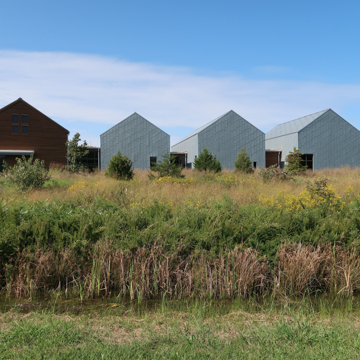After her escape to Philadelphia in 1849, Harriet Tubman, born Araminta Ross and enslaved in Dorchester County, boldly ferried enslaved people to freedom as a conductor on the Underground Railroad. During the Civil War she continued her work as a spy, scout, and nurse and became a prominent abolitionist and suffragist. The Maryland Park Service and National Park Service joined forces in the early 2010s to create a historical park commemorating Tubman’s life and work on the Eastern Shore. Few historic structures remain directly related to Tubman, but the marshy landscape of the park, adjacent to Blackwater Wildlife Refuge, evokes her experiences and those of other nineteenth-century residents. In 2021 archaeologists located the site of a cabin likely owned by Tubman’s father, Benjamin Ross, on land recently added to the refuge. This rare find was immediately celebrated as a tangible link to a place where Tubman spent formative young adult years, from roughly 1839 to 1844.
Opened in 2017, the Visitor Center for the new park was designed by the Baltimore firm GWWO Architects, who also designed the visitor center for Fort McHenry National Monument in Baltimore. Here the concept is titled “The View North,” to recall the journey north to freedom from slavery. The building takes the abstracted form of a row of gable-roofed structures, frankly contemporary but intended to signify the various barns or safe-houses on the Underground Railroad. The large sections house administrative offices to one side and exhibit and visitor spaces to the other, with an opening to the north and the “legacy garden” at the middle. The low glass and steel connecting hyphens also offer views of the surrounding landscape.















